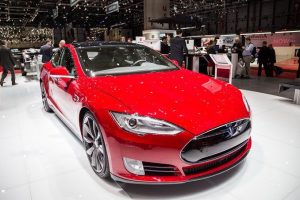Tesla (TSLA) Lowers Prices

Tesla, Inc. (TSLA) recently announced that it was lowering prices on certain models of its Model 3 and Model Y vehicles as competition intensifies, with other car companies such as Ford Motor Company (F) coming out with all-electric vehicles.
KEY TAKEWAYS
- Tesla is lowering prices on certain models ahead of additional competition.
- This could compress its margin.
- Investors should monitor the competitive landscape.
The Model 3 is a four-door midsize sedan that Tesla introduced to the market in July 2017. It was designed and priced to appeal to a broad customer base. With management's recent move, Tesla cut the price tag on its Standard Range Plus by $1,000 to around $37,000. This comes on the heels of a move to lower the price by $2,000 last year.
Meanwhile, on its Model Y Standard Range, Tesla cut the price by $2,000 to approximately $40,000. This is a compact sports utility vehicle (SUV) that the company started delivering last March.
These steps follow multiple price cuts on Tesla's Model S vehicles last year, along with lowering prices on its Model X. Model S, a four-door full-size sedan, was Tesla first model to hit the market in 2012. Tesla's Model X is a midsize SUV.
While this could spur demand for its vehicles, it will likely cut into Tesla's gross margin.
Significance for Investors
With increased competition, this could prove an astute move to stay ahead of others. However, unless Tesla is able to cut costs or wring out greater efficiencies, this move will hurt its margin.
In the fourth quarter, Tesla's automotive revenue was $9.31 billion, and the company's gross profit was $2.24 billion. This generated a gross margin of 24.1%. These results compare favorably to the year-ago period, when revenue was $6.37 billion with a $1.43 billion gross profit, equating to a 22.5% margin.
However, upon closer examination, part of this increased gross profit was due to higher regulatory credits that Tesla collected. These totaled $401 million in the most recent period compared to $133 million last year. After taking these out of both quarters, Tesla's gross margin contracted to 19.8% from 20.4%.
The Bottom Line
Regulatory credits, as management notes, will fade over time as other car manufacturers make their own electric fleet. Hence, it is important to compare Tesla's results without this additional revenue, which flows to the bottom line. On that basis, with its margin already under pressure, the recent price drops will likely cause a further contraction. To keep up profitability, Tesla will need to become more efficient and/or sell more cars. The latter might prove challenging as competition intensifies.
Source: Read Full Article
